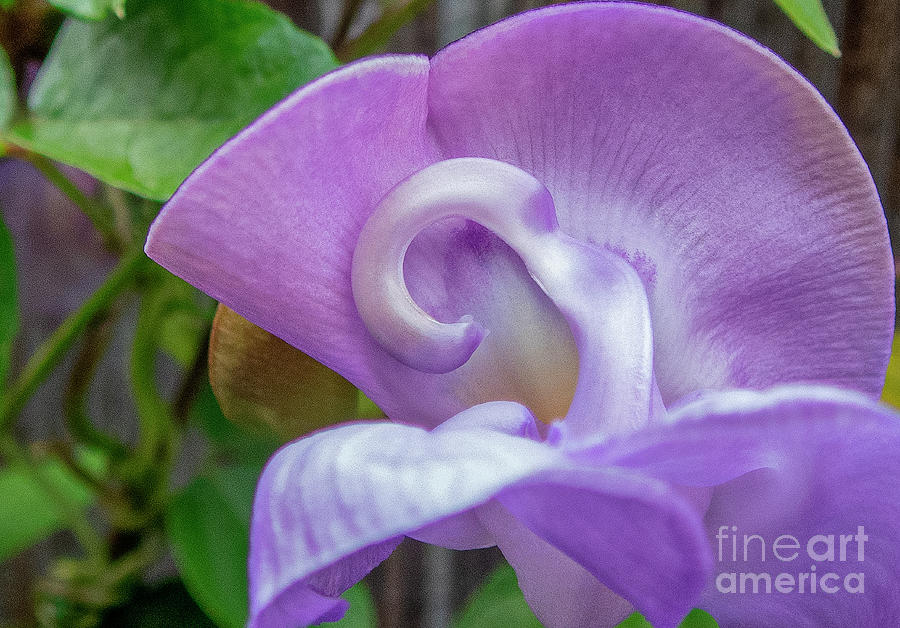

However, if you're looking for a quick hit of color and fragrance then sweet peas are the best choice of fast-growing flowering vines. If these fast-growing flowering vines are grown in zone 6 or above, they are also evergreen making them a brilliant, permanent addition to the garden. What is the fastest growing flowering vine?Īkebia quinata are one of the fastest growing flowering vines, adding 20 feet to its height every year. These fast-growing flowering vines all erupt in beautifully colorful and scented blooms. Sweet peas, Akebia quinata, star jasmine and honeysuckle are some of the best flowering climbers. Growing a kiwi from seed will take longer to produce fruit, but will bring with it a source of great pride.
SNAIL VINE HOW TO
Alternatively, if you want a challenge then learn how to grow kiwi from seed. ‘They need plenty of space on a strong support structure and will take three to five years to fruit.’ Despite taking a few years to fruit, they will grow around 6 to 12 feet a year.įor an instant vine, purchase an established plant from your garden center or online. ‘Kiwi fruit vines are vigorous, hardy and easy to grow,’ says Period Living's gardening expert Leigh Clapp. Kiwi vines on the other hand are relatively fast-growing flowering vines that produce rose-like blooms. It flowers pale purple snail-shaped blooms. However, they are not always straight-forward to grow. The Snail Vine is a good, fast growing perennial for deserts. Grapes are the conventional choice, and bring with them pretty flowers followed by delectable fruits. The species name caracalla was derived from the Spanish and Portuguese word "caracol", which means snail.If you want fast-growing flowering vines that bring more than just pretty blooms, then consider adding a fruiting vine to your garden. Taxonomic tidbits: Vigna contains over 200 species and is closely related to the genera Phaseolus and Hardenbergia. Snail vine can occassionally freeze to the ground during the Phoenix winter but will rapidly re-grow in the spring. Propagation: Asexually by softwood cutting under high humidity, seed.Īdditional comments: This is a nice, but extremely ( 'DANGER!!.DANGER!!)Įffect where purple blue flowers are wanted to give a subtle cooling effect. Pruning: Shear or head back vigorously to control spread, needs support to climb by twining. Sensitive but use water to control the vigorous growth of this vine. Watering: Apply irrigations regularly throughout the year, drought
SNAIL VINE FULL
Light: Partial shade to full sun when mature. Temperature: Cold sensitive, subject to chilling injury below 40 oF. Seasonal Color: Flowers in spring, and then sporadically Leaf, leaflets ovate to lanceolate to 3 inches medium texture.įlowers & Fruits: White to bluish purple (most common), classic pea flower, flower buds have a distinct hooked spur or keel, sometimes fragrant fruit is a linear pod to 7-inches long. It needs structural support such as a fence or trellis to twine upon.įoliage/Texture: Alternate, trifoliate (three leaflets/leaf)

Growth Habit: Snail vine is a tender, evergreen, herbaceous perennial that is a vigorously twining tropical evergreen vine to 100 feet. Landscape Use: Trellis, arbor, green wall (with support) and fence covering.įorm & Character: Trailing, climbing, sneaky agressive, delicate, tropical. Scientific: Vigna caracalla (Synonym: Phaseolus caracalla)Ĭommon: snail vine, corkscrew flower, corkscrew vine


 0 kommentar(er)
0 kommentar(er)
